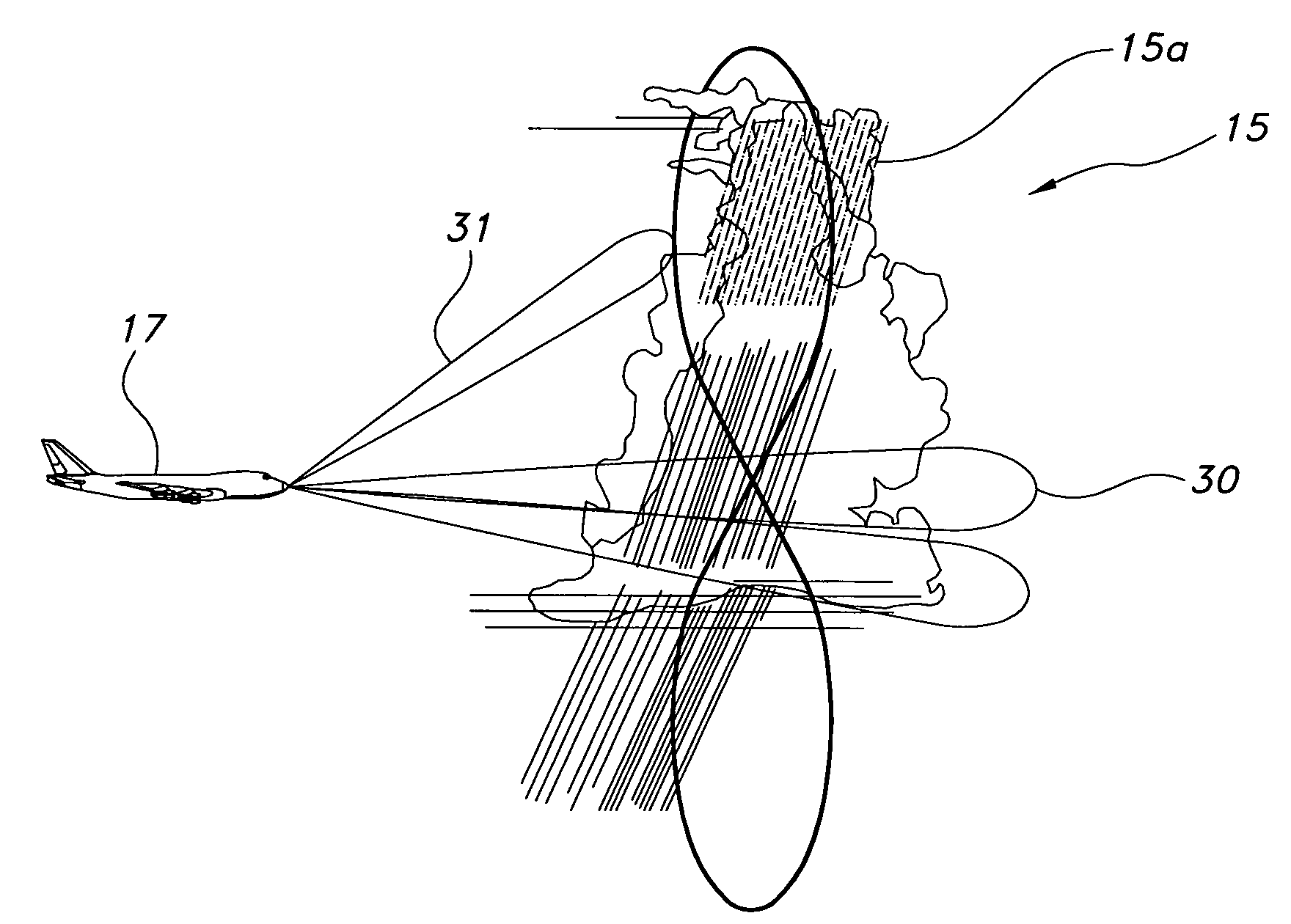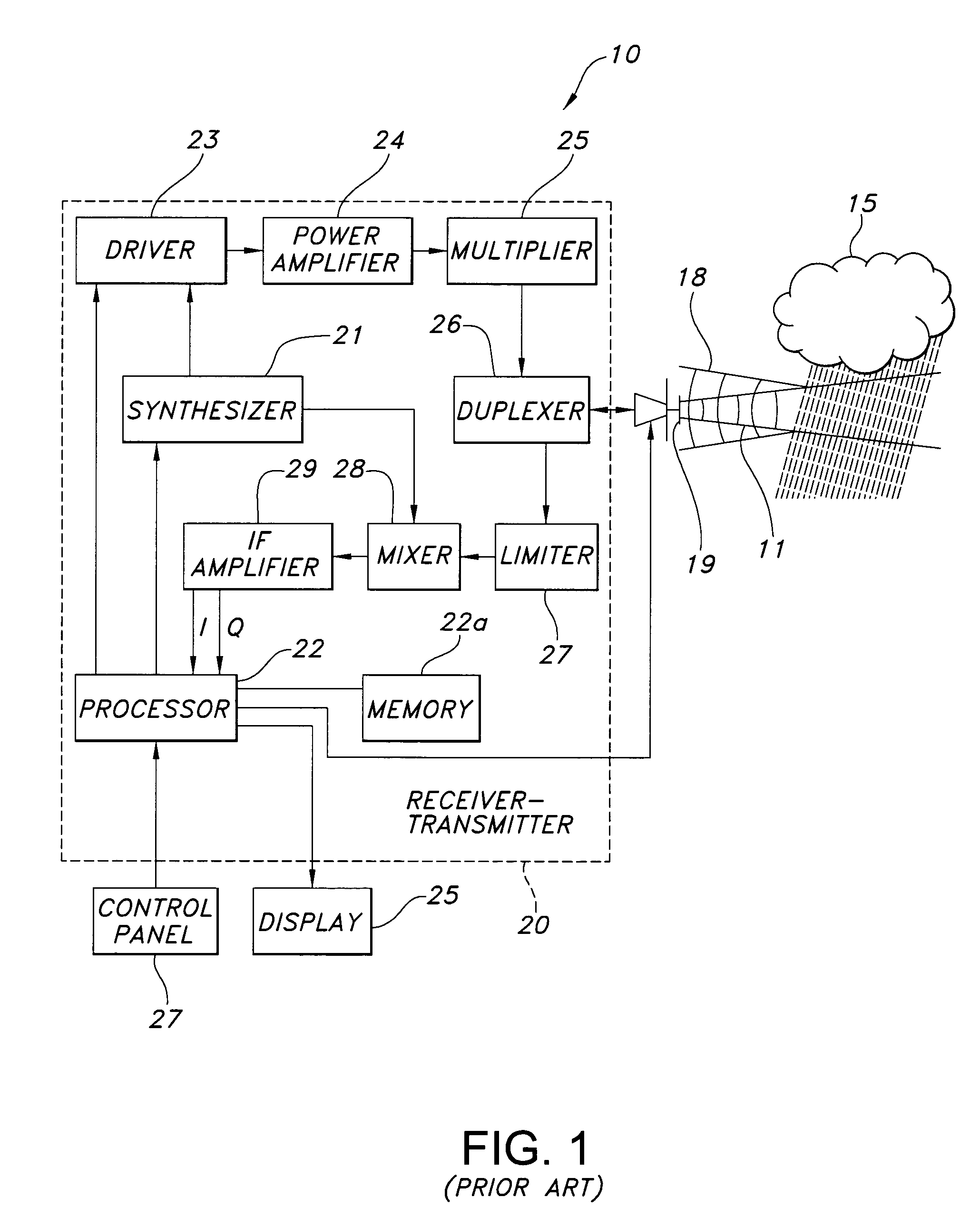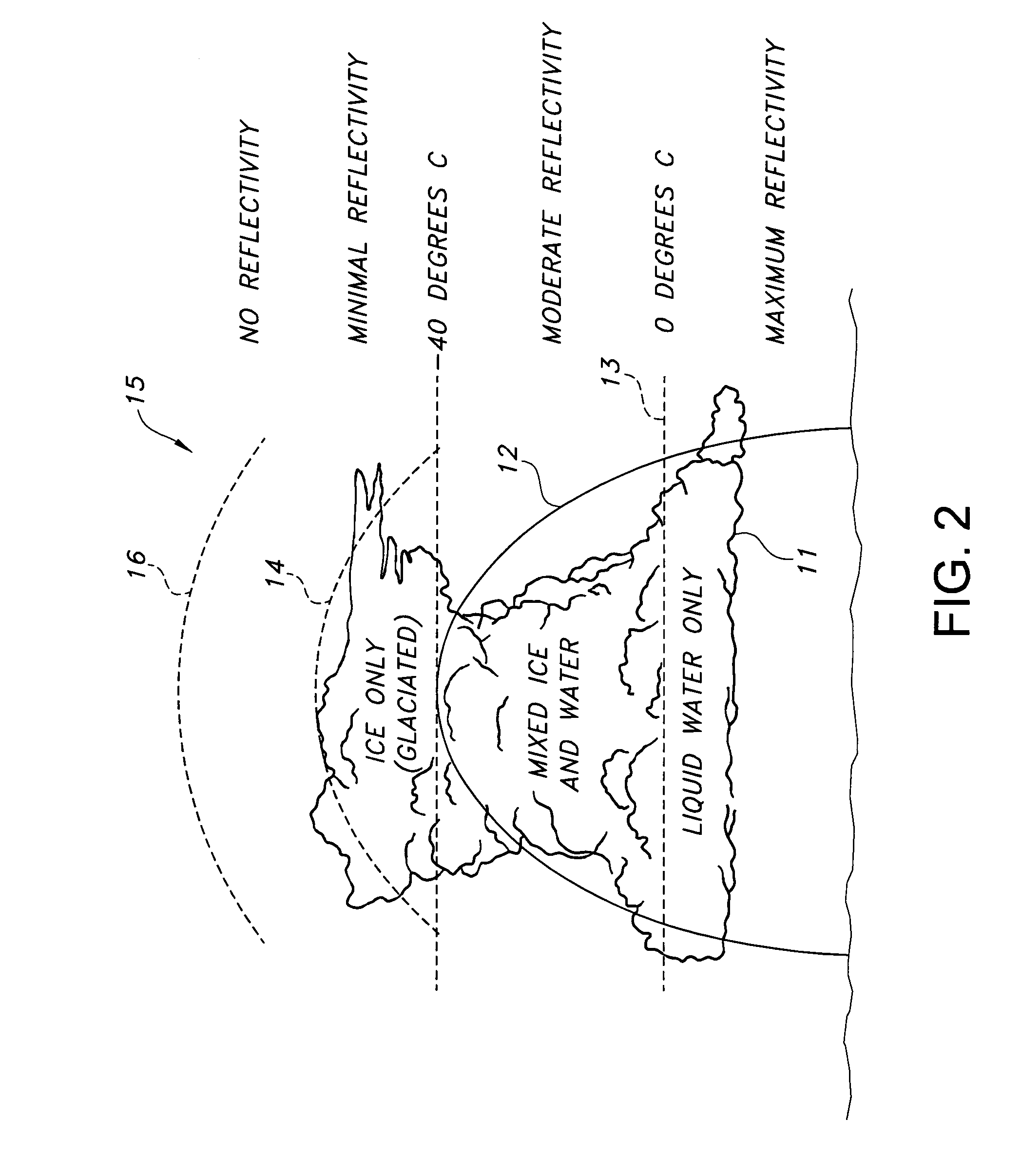Directed sequential hazard assessment weather radar
a weather radar and hazard assessment technology, applied in the field of weather radar, can solve the problems of incompatibility with the rapid update requirements, time-consuming volume scans, and inability to detect or assess hazards, and the radar may not be optimized for either detection or assessmen
- Summary
- Abstract
- Description
- Claims
- Application Information
AI Technical Summary
Benefits of technology
Problems solved by technology
Method used
Image
Examples
Embodiment Construction
[0035]The present invention is for a directed sequential hazard assessment weather radar system for detecting weather and hazards with low latency and high confidence. In the directed sequential hazard assessment weather radar system, initial detection of a hazard is separated from assessment of the hazard. The present invention may be used for supporting turbulence detection, storm top detection, hail detection, lighting threat assessment, and all other hazards that are detectable or can have their existence inferred by a weather radar system.
[0036]Weather radars are known in the art for detecting severe weather and for providing a flight crew in an aircraft a two-dimensional map display showing range, bearing, and intensity of detected weather patterns. Flight hazards due to weather conditions are primarily the result of precipitation and turbulence. A block diagram of a representative weather radar 10 that may incorporate the present invention for directed sequential hazard asses...
PUM
 Login to View More
Login to View More Abstract
Description
Claims
Application Information
 Login to View More
Login to View More - R&D
- Intellectual Property
- Life Sciences
- Materials
- Tech Scout
- Unparalleled Data Quality
- Higher Quality Content
- 60% Fewer Hallucinations
Browse by: Latest US Patents, China's latest patents, Technical Efficacy Thesaurus, Application Domain, Technology Topic, Popular Technical Reports.
© 2025 PatSnap. All rights reserved.Legal|Privacy policy|Modern Slavery Act Transparency Statement|Sitemap|About US| Contact US: help@patsnap.com



